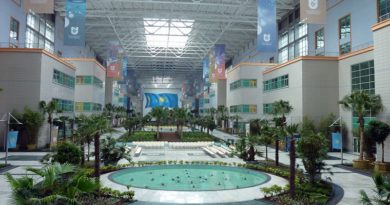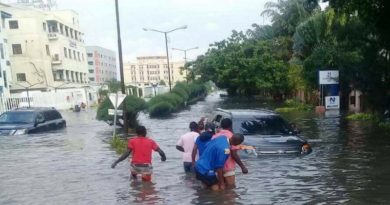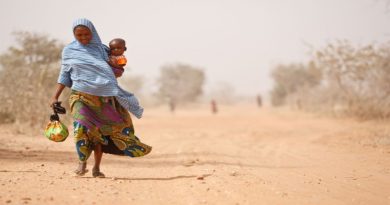GEF approves new funding, backs collaborative approach
Marking the 30th anniversary of the Global Environment Facility’s establishment, representatives of 184 member countries approved new projects supported by the GEF and Least Developed Countries Fund and welcomed the heads of five international environmental conventions who shared their priorities for the post-pandemic period. The GEF Council also endorsed a roadmap for long-term complementarity with the Green Climate Fund.
Three decades after the Global Environment Facility’s establishment, the multilateral fund’s governing body approved 39 new initiatives designed to help the planet heal after the COVID-19 pandemic, welcomed increased collaboration across international conventions, and endorsed plans for a new coordinated approach to working efficiently with the Green Climate Fund.
GEF CEO and Chairperson Carlos Manuel Rodriguez said turning the tide on compounding environmental threats needed to be addressed together, not one at a time, and with everyone at the table.
“The pandemic was only a taste of what’s to come if we do not ease the pressures on our planet,” he said. “We know that developing countries are increasingly committed to taking action on environmental challenges. With additional resources, the GEF is in an excellent position to scale up meaningful action even in places that have been hit hard by COVID-19.”
The GEF Council, meeting virtually, approved a $281 million, 92-country work program supporting action on marine conservation, biodiversity loss, climate change, deforestation, land degradation, chemical pollution, mercury use, and other challenges. Each dollar of GEF funding is expected to mobilize $10 in co-financing from other sources, and the projects are set to benefit more than 18 million people while generating global environmental benefits.
Representatives of the GEF’s 184 member governments also approved more than $60 million from the Least Developed Countries Fund for urgent climate adaptation projects in Bhutan, Central African Republic, Eritrea, Kiribati, Lesotho, Somalia, and Timor-Leste.
The LDCF is the only dedicated source of climate adaptation support for the Least Developed Countries.
With this latest funding, the GEF-supported LDCF and Special Climate Change Fund (SCCF) have provided more than $2 billion in targeted support to enhance the climate resilience of developing countries’ agriculture, water, and natural resource management sectors, and to kickstart entrepreneurship and investment in climate adaptation products, services, and technology. These initiatives have reduced the climate vulnerability of 30 million people to date.
“I am very pleased to highlight that the LDCF and SCCF now support an extensive and crucial portfolio on climate resilience, comprising more than 400 approved projects,” Sonam Phuntsho Wangdi, Chair of the Least Developed Countries Group and Secretary to the National Environment Commission of the Kingdom of Bhutan, told the LDCF/SCCF Council meeting.
“We have come a long way and so much has been achieved over this period, however, with increasingly devastating impacts of climate change felt dearly, we must find ways to deepen our proactive adaptation efforts,” Wangdi said.
Presenting a new roadmap for long-term complementarity between the GEF and the Green Climate Fund, to be launched at the COP-26 climate summit in November, the GEF CEO said it was possible to build on each institution’s strength to mobilize additional financing without duplication of effort.
“The missions of both funds are partially shared and mutually reinforcing,” Rodriguez said. “Both value country-driven approaches and ownership, we both believe in maximizing impact and transformational change, and we support the highest international practice on accountability, transparency, gender, and safeguards. At the same time, the two institutions have differences and unique strengths that can complement each other.”
Environmental diplomacy will be in the spotlight later this year, when there will be a quick succession of high-stakes Conference of Parties (COP) summits that were originally scheduled to occur in 2020.
The heads of five international conventions supported by the GEF – on biodiversity, climate change, desertification, chemical pollutants, and mercury – joined the Council meeting to provide an update on recent negotiations and shared their plans to work more closely together in support of shared goals.
Elizabeth Maruma Mrema, Executive Secretary of the UN Convention on Biological Diversity, said new targets being developed for the COP-15 biodiversity summit in October would cut across multiple focal areas and require broad engagement to protect the variety of plant and animal species and ecosystems upon which human life depends.
Similarly, successfully curbing carbon emissions and limiting the effects of global warming will require support across borders and sectors, said Patricia Espinosa, Executive Secretary of the UN Framework Convention on Climate Change (UNFCCC).
“Due to our interlinked global economies, when one nation is impacted, all feel the pain,” Espinosa told the Council, stressing the importance of GEF support to enable climate action and adaptation by vulnerable countries. “Support to developing nations is an act of self-interest, and the GEF’s mandate exists at the center of this work.”
Monika Stankiewicz, the Minamata Convention’s Executive Secretary, said all aspects of environmental degradation ought to be considered together. “The needs are vast, and underinvestment in any focal area will put at risk other focal areas,” she said, in a sentiment echoed by Rolph Payet, Executive Secretary for the Basel, Rotterdam and Stockholm Conventions.
“Sometimes there is a misunderstanding that climate change stands on its own, that biodiversity stands on its own,” Payet said, noting many connections between those agendas with chemicals and waste, including from the poor management of landfills, plastic waste in the ocean, land pollution, forest loss, and more. “The links are very strong.”
Ibrahim Thiaw, Executive Secretary of the UN Convention to Combat Desertification (UNCCD), said the GEF had evolved since 1991 to become “more than a funding mechanism” helping developing countries meet their international environmental obligations through the conventions, and was now a knowledge hub and integrator for people working to address cross-cutting issues.
Describing great promise from a growing recognition that “putting the natural world at the heart of our plans,” Thiaw called for an ambitious replenishment for the GEF-8 funding cycle that allows for high-impact integrated work across the conventions and their overlapping agendas.
“The synergies agenda should be the ‘new normal’ in GEF-8 programming. We cannot continue to work in silos,” he said.
The week-long GEF Council meeting also included updates from the Scientific and Technical Advisory Panel (STAP) and the GEF Independent Evaluation Office (IEO), and a stock-taking of progress made by the UN Development Programme in rolling out improved control mechanisms.
It was preceded by a day-long session about the role of civil society, indigenous peoples, and local communities in supporting climate resilience, featuring the experiences and lessons from recent initiatives supported by the LDCF, SCCF, Adaptation Fund, and GEF Small Grants Programme.
Mette Møglestue, Norway’s GEF Council Member who co-chaired the week-long meetings along with the GEF CEO, thanked the participants for their constructive and cooperative engagement. The next GEF and LDCF-SCCF Council meetings are scheduled to be held the week of Dec. 7 in Washington, DC.




